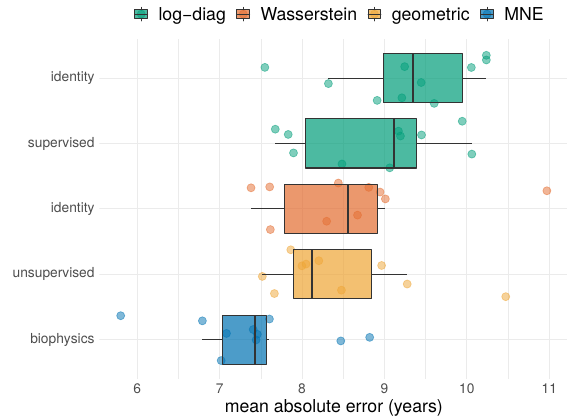Section: New Results
Manifold-regression to predict from MEG/EEG brain signals without source modeling
Magnetoencephalography and electroencephalography (M/EEG) can reveal neuronal dynamics non-invasively in real-time and are therefore appreciated methods in medicine and neuroscience. Recent advances in modeling brain-behavior relationships have highlighted the effectiveness of Riemannian geometry for summarizing the spatially correlated time-series from M/EEG in terms of their covariance. However , after artefact-suppression, M/EEG data is often rank deficient which limits the application of Riemannian concepts. In this article, we focus on the task of regression with rank-reduced covariance matrices. We study two Riemannian approaches that vectorize the M/EEG covariance between-sensors through projection into a tangent space. The Wasserstein distance readily applies to rank-reduced data but lacks affine-invariance. This can be overcome by finding a common sub-space in which the covariance matrices are full rank, enabling the affine-invariant geometric distance. We investigated the implications of these two approaches in synthetic generative models, which allowed us to control estimation bias of a linear model for prediction. We show that Wasserstein and geometric distances allow perfect out-of-sample prediction on the generative models. We then evaluated the methods on real data with regard to their effectiveness in predicting age from M/EEG covariance matrices. The findings suggest that the data-driven Riemannian methods outperform different sensor-space estimators and that they get close to the performance of biophysics-driven source-localization model that requires MRI acquisitions and tedious data processing. Our study suggests that the proposed Riemannian methods can serve as fundamental building-blocks for automated large-scale analysis of M/EEG.
|
More information can be found in [47].



